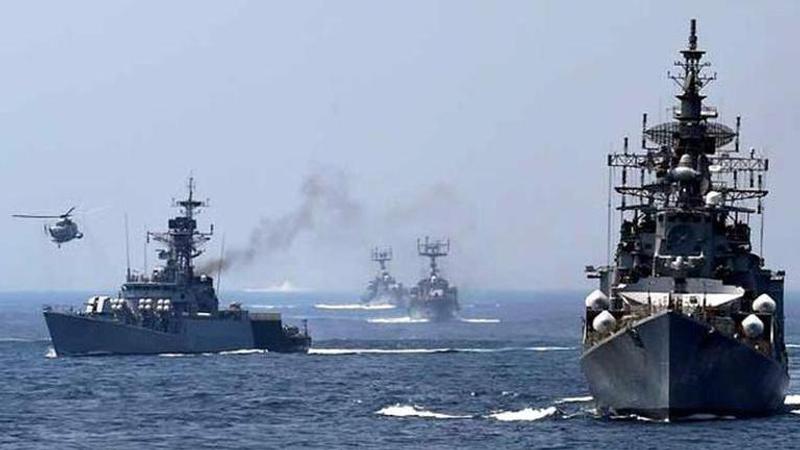Published 13:49 IST, July 29th 2020
Navy significantly expands deployment in Indian Ocean following border row with China: sources
The Indian Navy has deployed a large number of frontline warships and submarines in the Indian Ocean Region (IOR) in the wake of the border row in eastern Ladakh to send out a clear message to China, according to top defence sources on Wednesday.

Advertisement
The Indian Navy has deployed a large number of frontline warships and submarines in the Indian Ocean Region (IOR) in the wake of the border row in eastern Ladakh to send out a clear message to China, according to top defence sources on Wednesday. A source said the message has been "registered" by China. The Indian Navy deployed a range of its frontline warships and submarines in the IOR when the border tension escalated after the Galwan Valley clashes on June 15 in which 20 Indian army personnel were killed.
The defence sources told PTI that the government adopted a multi-pronged approach involving the Army, the Indian Air Force(IAF) and the Navy as well as diplomacy and economic measures to send out a firm and clear message to China that its misadventure in eastern Ladakh was not acceptable at all. They said the three service chiefs are engaged in deliberations on a regular basis to ensure a coordinated approach in dealing with the situation as well as to make China understand about India's clear message.
"Yes, our message has been registered by China," said a source without elaborating.
Asked whether China has responded to India's deployment, the sources said there was no visible increase in forays by Chinese ships in the IOR. They said the reason could be the PLA Navy's excessive deployment of resources in the South China Sea following the strong opposition by the US to Beijing's expansive territorial claims in the region.
The US sent a number of its warships to the South China Sea to demonstrate freedom of navigation and rallying support to countries who have territorial disputes with China over the region. The Indian Navy is also ramping up its operational cooperation with various friendly naval forces like the US Navy and Japan Maritime Self Defense Force in view of the fast evolving regional security landscape.
In the recent weeks, the Indian Navy has conducted exercises with the US, French and Japanese navies in the IOR, which were seen as sending a signal to China. The exercise with the US Navy involved its carrier strike group led by nuclear-powered aircraft carrier USS Nimitz. The US carrier strike group was transiting through the IOR on its way from the South China Sea.
The Indian Navy has also been expanding cooperation with like-minded navies in the region with an aim to keep strategically key sea lanes of communication safe and free from any influence. India, Japan and the US are part of the influential "Quad" or Quadrilateral coalition which also included Australia.
In November 2017, the four countries gave shape to the long-pending "Quad" coalition to develop a new strategy to keep the critical sea routes in the Indo-Pacific free of any influence. Following the Galwan Valley clashes, the IAF deployed almost all its frontline fighter jets like Sukhoi 30 MKI, Jaguar and Mirage 2000 aircraft in the key frontier air bases in eastern Ladakh and elsewhere along the Line of Actual Control(LAC).
The IAF has been carrying out night time combat air patrols over the eastern Ladakh region in an apparent message to China that it was ready to deal with any eventualities in the mountainous region. The Army significantly enhanced deployment after the clashes in Galwan Valley. The Chinese side also suffered casualties but it is yet to give out the details. According to an American intelligence report, the number of casualties on the Chinese side was 35.
Following the Galwan Valley incident, the government has given the armed forces "full freedom" to give a "befitting" response to any Chinese misadventure along the LAC. After the last round of military talks, government sources said the Indian side conveyed a "very clear" message to the Chinese army that status quo ante must be restored in eastern Ladakh, and it will have to follow all mutually agreed protocols for border management to bring back peace and tranquillity.
13:48 IST, July 29th 2020




